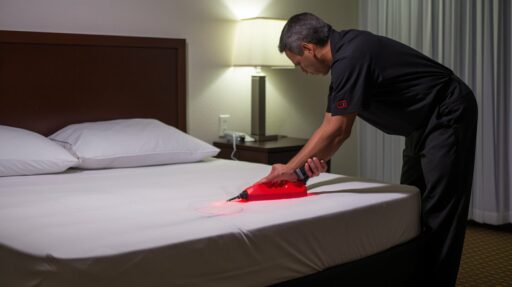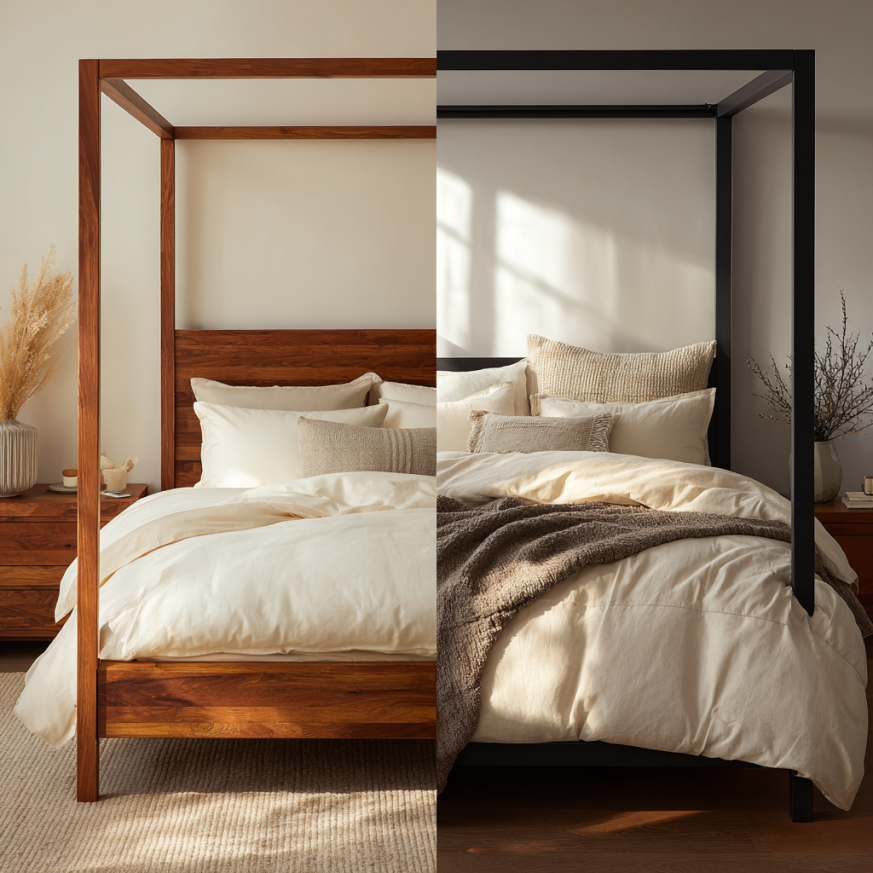Using Essential Oils for Relaxation

Are you looking for a way to find serenity and tranquility in your daily life? Using essential oils for relaxation might be just what you need. In the fast-paced world we live in, it’s important to prioritize self-care and create moments of calm amidst the chaos. Essential oils have long been known for their soothing and therapeutic properties, making them a popular choice for promoting relaxation and creating a peaceful atmosphere.
Key Takeaways:
- Essential oils such as lavender, chamomile, and ylang ylang are renowned for their stress-reducing and anxiety-relieving properties.
- These oils can be used in various ways, including diffusing, topical application, and inhalation, allowing you to find the method that works best for you.
- When using essential oils, always follow specific instructions for each oil to ensure safe usage and avoid adverse reactions.
- It is important to choose high-quality essential oils from reputable brands to ensure maximum benefits and efficacy.
- Incorporating essential oils into your routine can help create a serene and peaceful environment, promoting better sleep and overall well-being.
So why not give essential oils a try and discover the power of relaxation they can bring to your life?
The Benefits of Aromatherapy for Relaxation
Aromatherapy has long been recognized as a powerful tool for relaxation, and essential oils play a key role in this practice. These natural plant extracts are known for their stress-reducing and anxiety-relieving properties, making them perfect for creating a peaceful and tranquil environment.
When it comes to relaxation, there are several essential oils that stand out for their calming effects. Lavender, with its soothing floral scent, is a popular choice for promoting relaxation and better sleep. Chamomile, often associated with calmness and serenity, is another essential oil that can help reduce stress and anxiety. Citrus oils like orange and lemon are refreshing and uplifting, perfect for easing tension and improving mood.
Incorporating essential oils into your relaxation routine can be done in various ways. Diffusing the oils in a diffuser or adding a few drops to a warm bath can create a relaxing ambiance. You can also mix them with a carrier oil and apply topically or create your own massage oil for a soothing experience. Additionally, inhaling the aroma directly from the bottle or using a personal inhaler can provide instant relaxation whenever needed.
It’s important to remember that not all essential oils are created equal. To ensure you’re getting pure and high-quality products, it’s recommended to choose reputable brands and look for organic and therapeutic-grade oils. Always follow instructions for each oil and consider any potential allergies or sensitivities before use.

| Essential Oil | Relaxation Benefit |
|---|
| Lavender | Promotes better sleep and relaxation |
| Chamomile | Reduces stress and anxiety |
| Orange | Eases tension and improves mood |
As you explore the world of aromatherapy and essential oils, you’ll discover the immense benefits they can offer for relaxation. From creating a serene atmosphere to promoting better sleep and reducing stress, incorporating essential oils into your routine can truly enhance your overall well-being.
Creating a Relaxing Bedroom Environment with Essential Oils
Your bedroom should be a sanctuary for relaxation, and using essential oils can help create a calming atmosphere. Essential oils such as lavender, chamomile, and sandalwood have soothing properties that can promote better sleep and reduce stress. Here are some tips on incorporating essential oils into your bedroom to enhance relaxation:
- Diffusing: One of the easiest ways to use essential oils in your bedroom is through a diffuser. Simply add a few drops of your favorite oil to the diffuser, turn it on, and let the scent fill the air. Lavender and chamomile are popular choices for promoting relaxation and better sleep. Experiment with different oils to find the scents that work best for you.
- Topical Application: Another way to use essential oils in your bedroom is through topical application. Dilute a few drops of oil in a carrier oil, such as coconut or jojoba oil, and apply it to your skin. This can be done by massaging the oil onto your temples, wrists, or the soles of your feet. This allows the oil to be absorbed into your body and provides a calming effect.

“Essential oils can create a soothing and calming environment in your bedroom, helping you unwind and prepare for a restful sleep.”
Inhalation: Inhaling the aroma of essential oils can also help create a relaxing bedroom environment. You can place a few drops of oil on a tissue or handkerchief and inhale deeply, or use a personal inhaler. Another option is to add a few drops of oil to a bowl of steaming hot water and inhale the steam. This can provide immediate relaxation and help you transition into a peaceful sleep.
Creating a relaxing bedroom environment with essential oils is a personal journey, so feel free to experiment with different scents and methods to find what works best for you. Remember to always follow the instructions for each oil and use caution to avoid any allergic reactions or adverse effects. Your bedroom should be a haven of tranquility, and incorporating essential oils can help you achieve a more restful and rejuvenating sleep.
Table: Essential Oils and Their Relaxing Properties
| Essential Oil | Relaxing Properties |
|---|
| Lavender | Calming, promotes sleep |
| Chamomile | Soothing, reduces anxiety |
| Sandalwood | Grounding, promotes relaxation |
Enhancing Your Bedroom for Optimal Sleep
Your bedroom setup can greatly impact the quality of your sleep. Let’s delve into some key factors to consider for enhancing your sleep space.
First, consider incorporating feng shui bedroom tips. Feng shui principles emphasize the importance of harmonizing energy flow in your bedroom to promote relaxation and rest. Position your bed in a commanding position, away from the door but facing it, to create a sense of stability and security. Remove clutter and ensure the space is well-organized, as a tidy environment can contribute to a calm and soothing atmosphere.
Next, pay attention to sleep-enhancing lighting. Opt for warm, dimmable lights that mimic natural light patterns and can be adjusted according to your needs. This will help regulate your circadian rhythm and promote a more restful sleep. Consider using table lamps and wall sconces to provide soft, ambient lighting instead of harsh overhead lights.
| Bedroom Color Schemes | Temperature Control | Calming Bedroom Decor |
|---|
| Choose soothing colors for your bedroom, such as soft blues, greens, or neutrals. These shades can create a calming and peaceful atmosphere, conducive to relaxation. Avoid bold, stimulating colors that may hinder sleep. | Temperature plays a crucial role in sleep quality. Keep your bedroom cool, between 60-67°F (15-19°C), to promote optimal sleep. Consider using a fan, air conditioner, or adjusting your thermostat to maintain a comfortable temperature. | Lastly, create a calming ambiance with calming bedroom decor. Incorporate elements like plush pillows, soft blankets, and cozy rugs. Opt for natural materials and textures, like cotton and bamboo, to enhance relaxation. Consider adding soothing artwork, plants, or aromatherapy diffusers to create a serene atmosphere. |
By considering these factors in your bedroom setup, you can create an environment that promotes relaxation and optimal sleep. Remember, everyone’s preferences may vary, so don’t be afraid to experiment and personalize your sleep space to suit your needs.

Incorporating Essential Oils into Your Bedtime Routine
Your bedtime routine can greatly impact the quality of your sleep. Let’s explore how essential oils can be integrated into your routine for a more restful night.
Creating a Relaxing Bedroom Setup
To start, consider the scents that promote relaxation and sleep. Lavender and chamomile are well-known sleep-inducing scents that can be diffused in your bedroom. Simply add a few drops of these oils to a diffuser and let their aromatic properties fill the air. You can also enhance the atmosphere by using a calming essential oil spray on your pillows and bedding.
Additionally, optimizing your bedroom furniture can contribute to a better sleep environment. Invest in a comfortable mattress that provides adequate support, and consider using sleep-optimized furniture such as an adjustable bed frame or a cozy recliner for those seeking ultimate relaxation before sleep.
Designing a Minimalist Bedroom
A clutter-free sleep space can have a positive impact on your sleep quality. Consider adopting a minimalist bedroom design, with clean lines and minimal decor. This helps create a calming and serene environment that promotes relaxation. Keep your bedroom clean and organized, and opt for soft, neutral colors on the walls and bedding to maintain a tranquil atmosphere.
Setting Up a Bedtime Routine
Establishing a consistent bedtime routine can signal to your body that it’s time to wind down and prepare for sleep. Incorporate essential oils into your routine by adding a few drops to a warm bath or applying them topically with a carrier oil before bedtime. The act of massaging the oil into your skin can be soothing and help relax your muscles.
Remember, when using essential oils, it’s important to follow specific instructions for each oil and use caution to avoid adverse reactions. Always dilute essential oils properly and perform a patch test on a small area of skin before applying them to larger areas.

| Sleep-Inducing Scents | Relaxing Bedroom Setup | Sleep-Optimized Furniture | Minimalist Bedroom Design | Clutter-Free Sleep Space |
|---|
| Lavender | Diffuser | Comfortable mattress | Neutral colors | Minimal decor |
| Chamomile | Essential oil spray | Adjustable bed frame | Clean and organized | Soft, neutral colors |
| Clary Sage | Bath soak | Cozy recliner | | |
Creating a serene and relaxing bedroom environment is essential for a good night’s sleep. By incorporating essential oils into your bedtime routine and optimizing your sleep space, you can create the perfect atmosphere for a restful night. Remember to choose high-quality essential oils and follow proper usage instructions to ensure safe and effective results.
By incorporating essential oils into your bedtime routine, you can enhance the soothing environment of your bedroom and promote a more restful sleep. Experiment with different oils and scents to find the ones that work best for you. Whether it’s diffusing lavender in the air, applying chamomile topically, or creating a minimalist sleep space, incorporating essential oils can help you unwind and prepare for a peaceful night’s sleep.
Enhancing Your Sleep Environment
Your sleep environment plays a crucial role in achieving a restful night. Let’s uncover some effective ways to enhance your sleep space.
One of the first steps you can take to create a peaceful sleep atmosphere is to invest in blackout curtains. These curtains block out unwanted light and help create a dark and cozy bedroom retreat. The darkness promotes melatonin production, a hormone that regulates sleep and wakefulness, allowing you to achieve a deeper and more restorative sleep.
Another important aspect to consider is mattress comfort. Choose a mattress that provides optimal support and comfort for your body. A comfortable mattress not only improves the quality of your sleep but also helps alleviate aches and pains, allowing you to wake up feeling refreshed and rejuvenated.
Incorporating bedroom plants into your sleep space can also have numerous benefits. Plants such as lavender, jasmine, and aloe vera are known for their calming and soothing properties. They release oxygen during the night, purify the air, and create a peaceful ambiance. Just make sure to choose plants that are safe for pets and allergies.

| Plant | Benefits |
|---|
| Lavender | Reduces anxiety and promotes relaxation |
| Jasmine | Improves sleep quality and reduces stress |
| Aloe Vera | Purifies the air and enhances relaxation |
To further create a peaceful sleep atmosphere, consider adding calming scents to your bedroom. Essential oils such as lavender, chamomile, and ylang ylang can be diffused or diluted and applied topically to promote relaxation and induce sleep. Use caution and follow instructions when using essential oils to avoid any adverse reactions.
By incorporating these enhancements into your sleep environment, you can create a peaceful and tranquil space that promotes a restful night’s sleep. Remember to choose high-quality essential oils and create a personalized sleep space that suits your preferences and needs.
Personalizing Your Sleep Space
Your sleep space should reflect your personal preferences and needs. Let’s explore how you can personalize your sleep environment for ultimate relaxation.
1. Enhance your sleep environment with comforting scents: Incorporating essential oils into your bedtime routine can create a soothing and calming atmosphere. Choose sleep-inducing scents like lavender, chamomile, or ylang ylang, and use a diffuser or linen spray to infuse your sleep space with their relaxing aroma.
2. Set the perfect lighting: Adjusting the lighting in your bedroom can significantly impact your sleep quality. Install dimmable lights or use warm-colored bulbs to create a cozy and tranquil ambiance. Consider using blackout curtains or blinds to block out any unwanted light sources that may disrupt your sleep.
3. Design a clutter-free sleep space: A cluttered bedroom can contribute to a restless mind. Keep your sleep space clean and organized, minimizing distractions that may hinder your relaxation. Utilize storage solutions to neatly store away any items that do not contribute to a peaceful sleep environment.
| Personalizing Your Sleep Space Checklist |
|---|
| Create a calming atmosphere with essential oils |
| Adjust bedroom lighting for a cozy ambiance |
| Maintain a clutter-free sleep space for relaxation |
Remember, personalizing your sleep space is all about creating an environment that promotes relaxation and rejuvenation. Experiment with different scents, lighting options, and decluttering techniques to find what works best for you. The key is to create a sleep space that aligns with your preferences, allowing you to unwind and experience truly restful nights.

In addition to personalizing your sleep space, it’s essential to consider other factors that can enhance your overall sleep environment:
- Choose a comfortable mattress and pillows that provide proper support for your body.
- Add a touch of nature with bedroom plants known for their air-purifying and calming properties, such as aloe vera or peace lilies.
- Opt for a minimalist bedroom design to create a serene and clutter-free atmosphere.
“A good laugh and a long sleep are the two best cures for anything.” – Irish Proverb
By personalizing your sleep space and optimizing your sleep environment, you can create a haven of tranquility that promotes restful nights and revitalizing mornings. So go ahead, make your sleep space uniquely yours and embrace the blissful relaxation it brings.
The Importance of High-Quality Essential Oils
Not all essential oils are created equal, and it’s essential to prioritize the quality of the oils you use for relaxation. When it comes to incorporating essential oils into your routine, you want to ensure that you are using pure and high-quality products. The market is flooded with various brands, but not all of them meet the standards necessary to provide the maximum benefits.
To ensure that you are getting the best quality essential oils, look for reputable brands that prioritize the sourcing and extraction process. High-quality essential oils are derived from plants that have been grown without the use of harmful chemicals and pesticides, ensuring that you are not exposed to any toxins when using the oils. These brands also employ meticulous extraction methods that preserve the natural properties of the plants, resulting in oils that retain their therapeutic benefits.
Additionally, pure essential oils are free from any additives or adulterants. They are not diluted with carrier oils or synthetic fragrance enhancers, ensuring that you are getting the full potency of the plant’s essence. This purity is essential for achieving the desired relaxation effects and maximizing the therapeutic properties of the oils.
| Benefits of High-Quality Essential Oils |
|---|
| 1. Enhanced therapeutic effects |
| 2. Improved scent and aroma |
| 3. Safer for topical and inhalation use |
| 4. Long-lasting fragrance |
| 5. Better value for your money |
“Investing in high-quality essential oils is investing in your well-being. You deserve the best and purest oils to create a serene and peaceful environment for relaxation.”
When using essential oils for relaxation, it is crucial to prioritize quality over price. Cheaper alternatives may be tempting, but they often lack the purity and therapeutic benefits of high-quality oils. By selecting reputable brands and ensuring the oils are pure and authentic, you can rest assured that your relaxation journey is supported by the best nature has to offer.

Conclusion
Using essential oils for relaxation can transform your sleep environment into a peaceful retreat, allowing you to experience improved sleep and overall well-being. Essential oils such as lavender, chamomile, orange, sandalwood, clary sage, lemon, bergamot, rose, jasmine, and ylang ylang are known for their stress-reducing and anxiety-relieving properties. By incorporating these oils into your bedtime routine, diffusing them in your bedroom, or applying them topically, you can create a serene and calming atmosphere that promotes relaxation.
When shopping for essential oils, it is important to look for pure, high-quality products. Not all brands are created equal, so it’s crucial to choose reputable brands that prioritize quality and safety. By opting for high-quality essential oils, you can ensure that you are getting the most beneficial and effective products for your relaxation needs.
Remember, essential oils should be used with caution and in accordance with specific instructions for each oil. While they offer numerous benefits, it is important to note that essential oils should not be ingested without proper medical guidance.
By incorporating essential oils into your sleep environment, you can create a peaceful and serene atmosphere that promotes relaxation, leading to a better night’s sleep and improved well-being. So go ahead, explore the world of essential oils and start enjoying the serenity and tranquility they can bring to your life.
FAQ
How do I use essential oils for relaxation?
There are various ways to use essential oils for relaxation, including diffusing, topical application, and inhalation. Choose the method that works best for you and follow specific instructions for each oil.
Which essential oils are known for their stress-reducing and anxiety-relieving properties?
Some essential oils known for their stress-reducing and anxiety-relieving properties include lavender, chamomile, orange, sandalwood, clary sage, lemon, bergamot, rose, jasmine, and ylang ylang.
Can I ingest essential oils for relaxation?
No, essential oils should not be ingested without proper medical guidance. They are meant for external use only.
How do I find high-quality essential oils?
When shopping for essential oils, look for pure, high-quality products. Not all brands are created equal, so it’s important to read reviews and choose reputable brands.
Source Links




















































